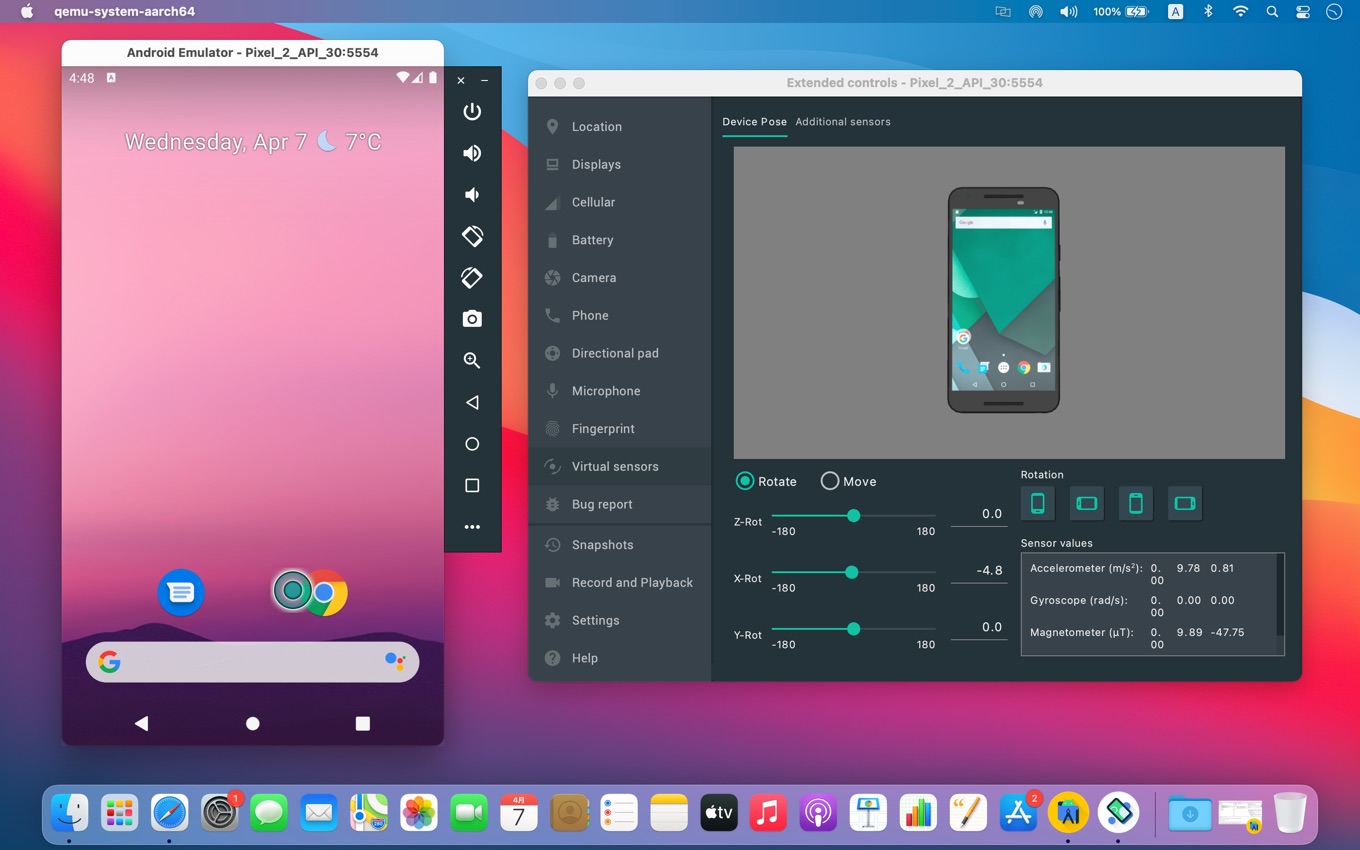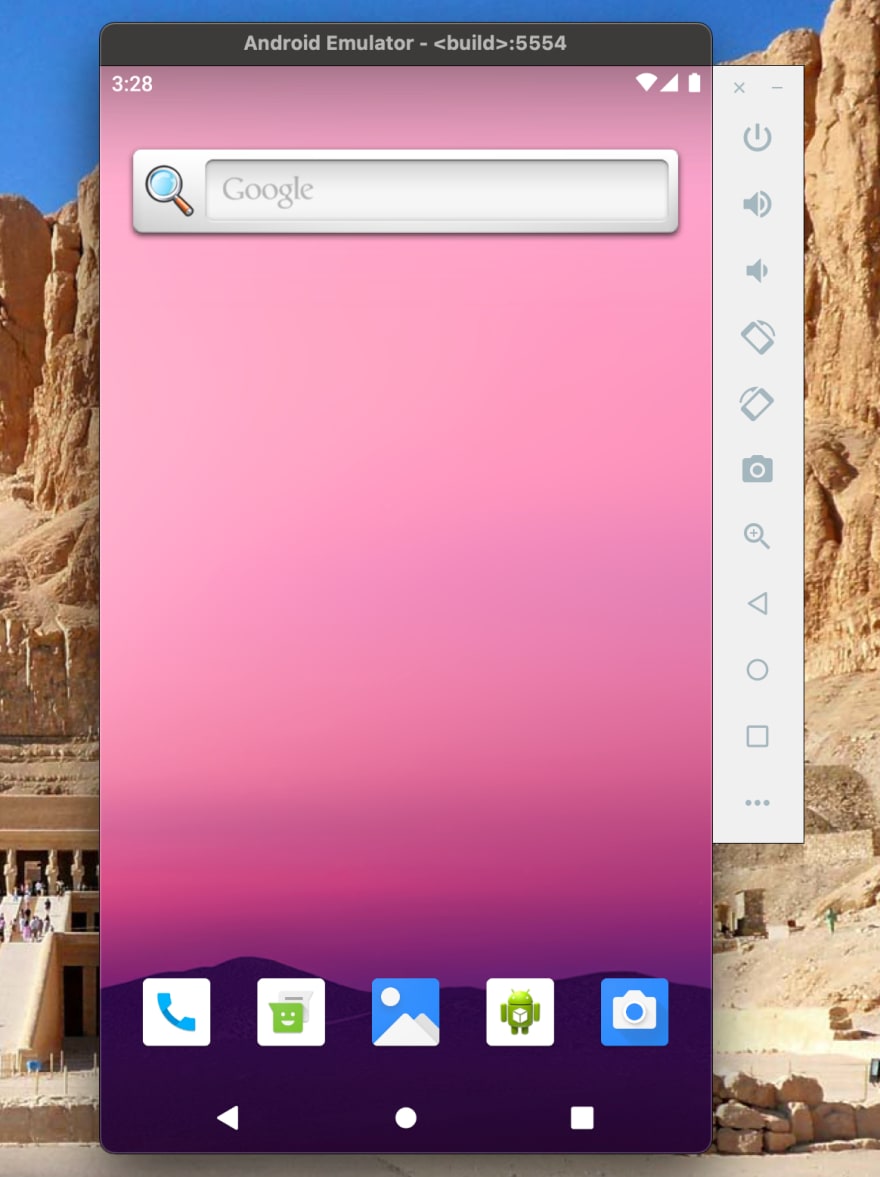This is the second post that I dedicate to talk about configurations using the new M1 Apple processor. As I said in the previous post, these configurations are workarounds until stable versions are released, however, for me, they have been useful and I guess that someone in the same situation as me can benefit from that.
- Android Studio Emulator Mac M1
- Android Emulator Mac Apple M1
- Emulator For M1 Mac
- Android Emulator On Mac M1
Using Android studio in the new Macbook Air
When you install Android Studio you will get the following warning:
Unable to install Intel® HAXM
Your CPU does not support VT-x.
I am using Android Studio 2.3(Latest). Till yesterday it was all good and working, today emulator is not connecting to the data network. I couldn't find any solution working so far. My Mac is runni. Adobe premiere transition plugins.
Unfortunately, your computer does not support hardware-accelerated virtualization.
Here are some of your options:
Msr x6 usb card reader software. 1 - Use a physical device for testing

2 - Develop on a Windows/OSX computer with an Intel processor that supports VT-x and NX
3 - Develop on a Linux computer that supports VT-x or SVM

4 - Use an Android Virtual Device based on an ARM system image
Emulator android mac m1 Author: Vuxaciyofi Salizite Subject: Emulator android mac m1. Visual studio mac m1 android emulator. Android emulator for mac m1 github. Android s Created Date: 1/20/2020 9:09:00 AM. So many people asking about running the android app on mac m1 system and about its performance on mac m1. So In this post I am sharing all steps to run the react-native android app on mac m1. Android Emulator for M1 is not available on stable releases yet and I am also waiting for Android Studio to fully support M1 macs so that I can use it for. Android Studio Emulator M1 Mac Os. We believe the above list was helpful to shortlist the best Android Emulator for you. You can further check our article about the latest Android phone trends of 2018. If you like our article then please do share it over social media channels.
Android Studio Emulator Mac M1
(This is 10x slower than hardware-accelerated virtualization)
Creating Android virtual device
Android virtual device Pixel_3a_API_30_x86 was successfully created
And also in the Android virtual device (AVD) screen you will read the following warning:
Android Emulator Mac Apple M1
If you want to learn more regarding virtualization in processors you can read the following Wikipedia article, the thing is that our M1 processor doesn’t support VT-x, however, we have options to run an Android Virtual Device.
As the previous message was telling us, we have 4 options. The easiest way to proceed is to use a physical device, but what if you haven’t one available at the moment you are developing?
From now on, we will go with the option of using an Android virtual device based on an ARM system image as options 2 and 3 are not possible to execute.
Using the virtual emulator
Emulator For M1 Mac
The only thing that you have to do is to download the last available emulator for Apple silicon processors from Github https://github.com/741g/android-emulator-m1-preview/releases/tag/0.2
Vimeo videos on. Once you have downloaded you have to right-click to the .dmg file and click open to skip the developer verification.
After installing the virtual emulator, we have to open it from the Applications menu.
After opening it you will see Virtual emulator in Android Studio available to deploy your Android application. Make sure to have Project tools available in Android Studio (View -> Tool Windows -> Project)

After pressing the launch button you will get your Android application running in your ARM virtual emulator :-)
Conclusion
Android Emulator On Mac M1
In this post, we have seen that is possible to install Android Studio in Macbook Air M1 and use a virtual device even that your M1 doesn’t support VT-x. You can learn more about this emulator in the following references: